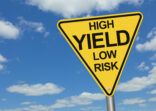FSA presents several views from the 2016 outlooks of various asset management firms.
The optimists
“From 1 January 2010 to 1 December 2015, the total returns in US dollar terms from emerging market equities were close to zero,” according to EFG Asset Management.
But the firm sees upside, asserting that emerging market equities next year will “bounce back after five years of weak returns.
“Valuations of emerging equity markets, in aggregate, are lower than those of developed markets (a price/earnings multiple of 13.2 compared with 17.7 for developed markets, for example) but the discount is broadly in line with that since 2000.
“Valuation grounds alone do not present a compelling aggregate case for emerging markets. Rather, the interesting opportunities are in areas which can benefit from meaningful restructuring. Chinese state-owned enterprises remain one of our favoured areas in this context.”
Permanent EM optimist Mark Mobius, executive chairman of Templeton emerging markets group, is also upbeat. He cited an IMF forecast that EM growth in 2016 is expected to be 4.5%, more than twice the rate of the 2.2% growth projected for developed markets, “even with major economies like Brazil and Russia in recession”.
He remains a firm believer in emerging markets over the long-term. In the short-term, risk will come from unforeseen geopolitical or financial events, Mobius believes.
“[I]nvestors tend to have a disproportionately negative reaction to surprises, and often emerging markets bear the brunt of a `flight to safety’ on these occasions.”
The moderates
More measured in his views is Jeremy Lawson, chief economist at Standard Life Investments. In discussing risk in 2016, he mentions that a hard landing in China is not priced in markets even if “sluggish but rebalancing” economic growth is.
His general concern about EMs is that domestic political issues, such as the domestic policy and political considerations in Brazil, have proven to be just as important as what happens in China or what the US Federal Reserve does. “If [emerging market] governments can do more to restore internal balance, it would do wonders for risk sentiment.”
Axa Investment Managers said EM growth should reach 3.9% in 2015 and there will be little change in 2016 or 2017, when the firm expects 4.0% and 4.2% growth, respectively.
The least appealing sub-region is Latin America, largely due to diminished demand for commodities from China. The firm sees LatAm posting a negative 0.8% growth this year. “Weak fundamentals outweigh reasonable valuations (13x forward P/E) as well as cheap currencies.”
Emerging Asia is also expected to slow, according to the firm. Axa’s forecast is 6.3% this year, 5.8% in 2016 and 5.7% in 2017, also due mainly to slowing growth in China. Indonesia and Malaysia could be more economically vulnerable than the other Asian markets due to a greater concentration of commodities exports.
The big pickup in EM growth should come from Central and Eastern Europe, which has links to the Eurozone.
“CEE looks set to emerge from an expected contraction of 0.6% in 2015. We forecast growth accelerating to 0.7% and 2.1% in 2016 and 2017. Much of this reflects an expected softer contraction in Russia. Otherwise CEE should be supported by moderate recovery in the euro area.
“The main caveat is that this region includes Russia, which has a substantial oil exposure. Furthermore the current geopolitical tensions would advise near-term caution.”
Of all the sub-regions, the firm’s preference with EMs is Asian equities, due to confidence that China’s government can manage the economic rebalancing and to “appealing valuations”.
The more pessimistic
Of the selected firms, the most negative on EMs is Pinebridge Investments, which sees a continuing growth slowdown.
“As a whole, emerging markets have been a big disappointment in 2015. Aggregate GDP growth fell below 4%, which typically corresponds with financial crises such as the Great Recession in 2008, the emerging market debt crisis in 2001, and the Asian financial market crisis in 1998.
“The fact that we avoided a more systemic emerging market crisis may be a relief.”
Yet the firm sees some upside, highlighting the divergence between the two drivers of emerging markets – China and India. China’s slowing economic growth is structural while India’s fundamental economic reforms are creating conditions for core economic progress. It forecasts India’s economy to grow at 7.7% in 2016.
“For the first time since 1999, India is projected to grow faster than China. And India’s growth trend is expected to accelerate further in the coming years, while China’s is expected to slow.”
















